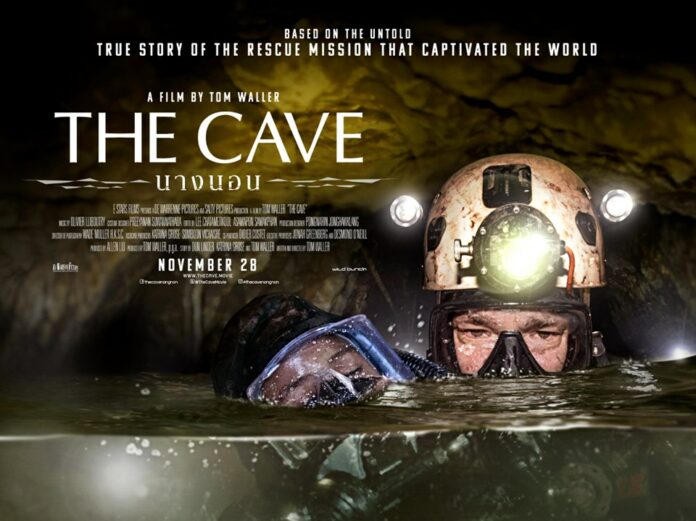
The recently released docudrama film “The Cave” – about the 2018 rescue of 12 youngsters and their coach from a cave – attracted much debate of the wrong kind.
Instead of a discussion over the merit of the film as a cinematography, which was directed by Thai-Irish film maker Tom Waller, it descended into a nationalistic debate over the portrayal of the Thai bureaucracy.
The film presented Thai bureaucracy as not just inefficient but out of touch with the pressing need of the trapped teenagers inside the flooded cave in Chiang Rai province.
In one scene, a Thai official simply told expert Western volunteer diver that he can’t show the map of Tham Luang cave to him simply because it was classified, a state secret, despite the fact that the lives of the 13 “wild boars” were at stake and the world’s media was watching live.
Read: Director, Cast Member Defend ‘The Cave’ Film Accuracy
Then in another scene, a volunteer carrying large water pump was turned away because he has to go to an arduous bureaucratic process of applying for a proper pass to enter the site.
While this writer covered the saga up in Chiang Rai last year as a reporter, I honestly do not know the fact on the two issues. Whatever the truth, it shows that Thais who got upset believe Waller distorted the event and made a mockery of the Thai bureaucracy.
Do not seek to find a definitive answer on the matter in this article as both sides continue to argue as to what exactly transpired. I think only a few people really know what really happened.
Be that as it may, I am more interested in how, in the film, the spotlight shines on few of the key foreign expert diver volunteers.
As Waller said during the premier of the film last month in Bangkok, these foreign volunteer divers as well as Thai volunteers are the “unsung heroes,” and the film was meant to be a tribute to them.
Fair or not, those who followed the 18-day saga live last year will not see governor Narongsak Osatanakorn playing a significant role in the film, even though the Thai press have made him to be during the real rescued attempt. Also downplayed was the Thai Navy SEAL unit, except former SEAL member Saman Kunan, who died trying to rescue the 13 lives. He is definitely a hero.
If anything, the film reminds us that history is often selective by nature as we accord importance to different historical figures.
In this case, the Thai side was largely played down whereas the foreign side was the focus.
Thai political history is no different, as seen in a recent move to name a meeting room after Prince Boworadet at the army headquarters in October.
Pro-democracy camp regards the prince as an enemy of popular rule because he tried, but failed, to restore absolute monarchy in a 1933 revolt, a year after the Ancien Régime was overthrown.
For pro-monarchy Thais and the current government, the prince is apparently a hero who remained loyal to King Rama VII and the old order. To these people, Pridi Banomyong, the man who led the revolt that ended the absolute monarchy in 1932, is a villain.
What is a hero then? A hero from whose point of view? These are subjective questions.
In the end, there can be several versions of what transpired at the cave, depending on who directed the film and which angle one looks at. In this sense, history is no different, we direct the history of our society depending on our own political disposition.











































